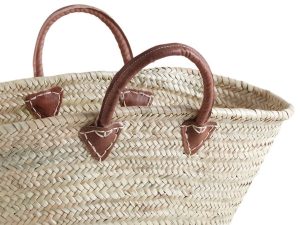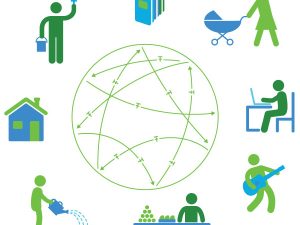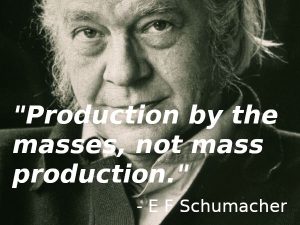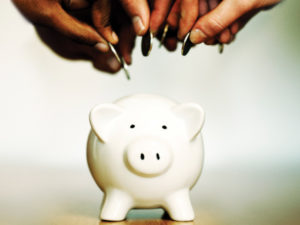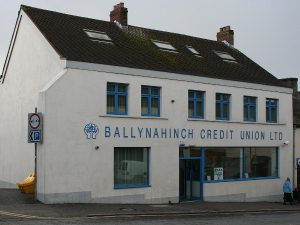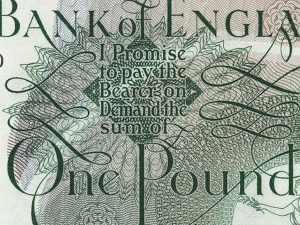Local / independent currencies - introduction
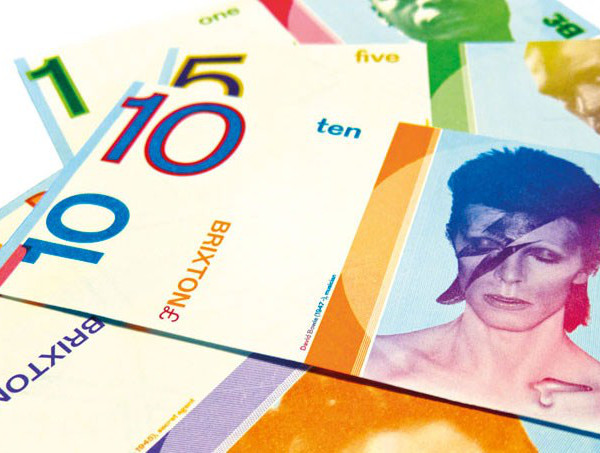
“We should be moving toward local currencies not global or European currencies.” – David Korten
Contents
What are local / independent currencies?
There’s no one answer – local, complementary, alternative, community or independent currencies are so varied. What we can say is that they’re set up to address particular problems in particular communities. They have a purpose that’s not served by the national currency. They’re usually devised either by grass-roots community organisations, or by municipal authorities. They recognise that participants will also use the national currency for various aspects of their lives. They’re not legal tender, so you can’t force someone to accept them as payment, and they can’t be used to pay national taxes.

The Brixton Pound’s original shop front.
History
The idea of using just one national currency is quite modern. Currencies used to be much more localised, and people often used different sorts of money for different aspects of their lives.
As nation-states developed, money became more centralised, but even then, in Elizabethan times, gold and silver coins were used, with varying rates of exchange. Then during the English Civil War, the state lost control of the supply of money, and local traders stepped in to produce tokens for local goods and services. These local tokens were banned when the monarchy was restored.
In remote areas of the US in the 18th and 19th centuries, loggers and miners were often paid by their company in ‘scrip’ – vouchers that could only be spent in the company store. However, companies inflated prices in their stores, fleecing their workers who couldn’t shop elsewhere. This practice was outlawed in the middle of the 20th century.
Interview with Stephen DeMeulenaere, Canadian complementary currency specialist and founder of the Complementary Currency Resource Center.
Independent currencies have often been set up in reaction to economic crashes. For example, several schemes were set up in Europe during the Great Depression. Wörgl in Austria created a local scrip currency in the early 1930s, thanks to which employment increased, infrastructure projects were built, and new businesses bloomed. It was so successful that the central bank panicked, and ’emergency currencies’ like Wörgl’s were banned.
In the 1980s, Michael Linton came up with Local Economy Trading Schemes (LETS) and these took off in communities all around the world. These are in effect IOU schemes, enabling trade and exchange between community members. Like the Wörgl, these have the effect of helping those who don’t have access to mainstream money to trade goods and services.
Timebanking schemes are similar to LETS but bring an egalitarian approach to community trade. An hour of your time is worth the same as an hour of my time, regardless of the services we’re providing.

Tokens issued in Southwark by John Ewing (a local tobacconist) during the English Civil War.
In the 1990s, the Banco Palmas was founded in Brazil. A fishing community was moved inland to enable luxury sea-front development. The people had to abandon fishing and create new enterprises. Funds were difficult to obtain, so they set up a bank and their own currency to help local people to trade. The community flourished, and though the Palmas are no longer officially in operation, the currency still circulates unofficially.
After Argentina’s crash of 1998-2002, many local currency schemes appeared, with local notes holding their value compared to the state currency (which was subject to hyperinflation).
In 2006 the BerkShares scheme was launched in Massachusetts. Their beautiful notes, featuring local celebrities like Herman Melville, are made on the same presses as federal dollars, and are issued and redeemed by local banks (which is not legal in the UK). To encourage use of BerkShares, when converting to Berkshares you get an extra 5%. And to discourage extraction, you lose 5% when converting back.
How local currencies give value for money – TEDx talk, Brixton.
In 2007, the Transition Movement in Totnes copied the BerkShares idea, but without the ability to create high-quality notes or issue through banks. There was just one office for issuance and exchange. The Totnes Pound no longer exists, but it inspired other groups, including Lewes in 2008, Brixton in 2009, and Bristol in 2012. Many of the notes were bought by tourists (especially the Brixton £10, featuring local lad David Bowie) and were kept as souvenirs rather than spent. Brixton and Bristol developed digital forms of their currencies, and were the first ways that you could pay with a mobile phone in the UK.
The Bristol Pound grew to be the UK’s largest ‘town pound’ with the greatest circulation and membership. Thanks to collaboration with the local authority and other anchor institutions, the money could be used for business rates, public transport and electricity. But even the Bristol Pound didn’t manage to live up to its original dreams. The level of usage remained relatively small (at about 2,000 people in a population of half a million) meaning the impact was limited.

Berkshares local currency has a business of the month – winners include this compost business.
The UK’s town pound schemes have largely gone, but many groups are still looking at how currencies could be used to change our economy. The links between GDP growth, environmental damage and increasing inequality are recognised by many people. Many believe that to regenerate biospheric and societal health, we need to experiment with alternatives to the current market economic norms. Brixton Pound is developing a new blockchain-based currency. Bristol Pound is working on Bristol Pay, to offer not only a local non-profit payment option, but also tokens to encourage a wider understanding of the impact of our day-to-day life choices. These tokens will be less about trade, and more about gamification, social reputation and creating a city dashboard, measuring things like the number of favours being done across the city to recognise the importance of social capital.
There are other local token approaches taking off. CitizenCoin in Bradford thanks people for volunteering and participating in various community activities by ‘paying’ them digital coins, which participating businesses can choose to give discounts for.

In the early Middle Ages in the Holy Roman Empire, thin metal tokens called bracteates were made and distributed locally by princes and monasteries to serve as media of exchange. They had no intrinsic value, and were recalled regularly, often annually, with a small deduction – enough to dissuade people from holding on to them, and persuade them to spend them into the local economy instead. Here’s a bracteate from 12th century Germany.
Around the world, token-based ideas are gaining ground. The MetaCurrency Project developed the concept of “current-see” – making visible the flows of value and capital including environmental capital, knowledge capital and spiritual capital. Other groups like Hypha are developing complex multi-currency systems to enable people to build communities, both geographical and digital, with some currencies for social reputation, some for accounting of work contributed, and others for trade.
Meanwhile, work on mutual credit is growing. This is focused on helping smaller businesses who find it difficult to get loans from banks and who struggle with cash flow. By creating local trading loops, businesses can settle bills and be paid without money. Sardex is the largest and best known of such schemes. Meanwhile, others are building on work in Slovenia since the early 1990s, which uses algorithms on datasets of invoices to automatically find self-resolving loops of invoices that could be instantly deemed to be paid.
For another point of view on local currencies, you can read Tom Greco’s review.

At its height in 2001, the Argentinian Red de Trueque (barter network), using ‘Creditos’ rather than conventional money, was the biggest community currency movement in the world. There’s a revival starting to happen.
What are the benefits of local / independent currencies?
For the ‘town pound’ backed currencies, the aim is to keep money local. Most money today is spent in large chain stores, and much of this is extracted from the local economy, being spent far away on dividends to shareholders, head office costs, and globalised supply chains. Local currencies remain in the local community, growing local businesses and strengthening the local economy (the local multiplier effect).
Local currencies build social capital too, creating deeper relationships within communities. They help to retain unique high streets, encouraging independent stores that create more and better local jobs, rather than the chains that make many places feel like ‘clone towns‘. Meanwhile, shorter supply chains mean that transport-related emissions or ‘food miles’ are reduced.
Other unbacked types of currency, like mutual credit, LETS and timebanking, provide an additional benefit by creating liquidity that’s cheaper and more accessible than bank loans or other short-term finance providers.

The world’s first local currency cash machine – Brixton Market, South London.
For the currencies that are least like money, such as those counting or making visible various behaviours and flows, the benefit is the data itself, which help to shed light on the things that are invisible to money – like the value of unwaged work to our communities.
What can I do?
Join a scheme
There are many projects seeking to change how we relate to the economy. Tempo is a national timebanking-type platform; CounterCoin in Stoke-on-Trent and CitizenCoin in Bradford focus on volunteering and the gift economy; Hay-on-Wye has a ‘shop local’ voucher scheme; many towns have LETS projects. If you’re a small business, you might want to look into mutual credit, to free up your cash flow.
There are listings of currency schemes in the UK, the US and globally.

A selection of local currency notes from various countries.
Start a scheme
Do some research if you want to start a community currency. The first thing is to be clear on what you’re trying to achieve. Then you can think about the logistics – what form the currency will take, how it will be issued, how it will circulate, how it will be redeemed. Regulation can be an issue, depending on how you want the currency to work. But beyond all that, the biggest challenge is how to build a community around the currency. To improve your chances of success, you could get in touch with an existing scheme and offer to volunteer. You’ll learn a lot from the inside.
Specialist(s)
Thanks to Diana Finch of the Bristol Pound for information.
The specialist(s) below will respond to queries on this topic. Please comment in the box at the bottom of the page.
 Diana Finch has been Managing Director at Bristol Pound CIC since 2018. After starting her career in bookkeeping, she moved on to designing accounting systems, before deciding to focus on senior management roles in non-profit organisations. She wants to develop new economic interventions that can move us towards an economy that is good for people and planet.
Diana Finch has been Managing Director at Bristol Pound CIC since 2018. After starting her career in bookkeeping, she moved on to designing accounting systems, before deciding to focus on senior management roles in non-profit organisations. She wants to develop new economic interventions that can move us towards an economy that is good for people and planet.

